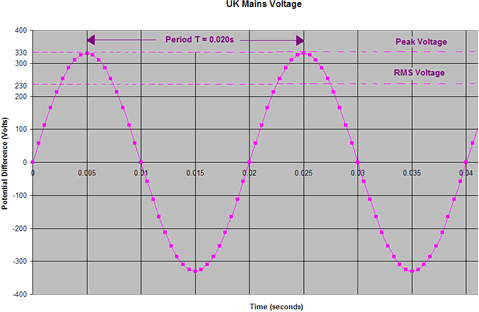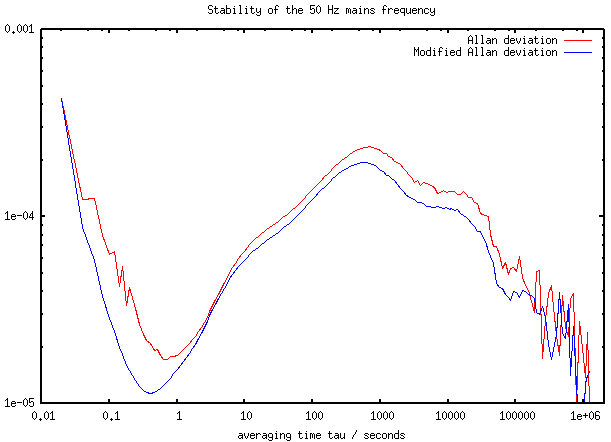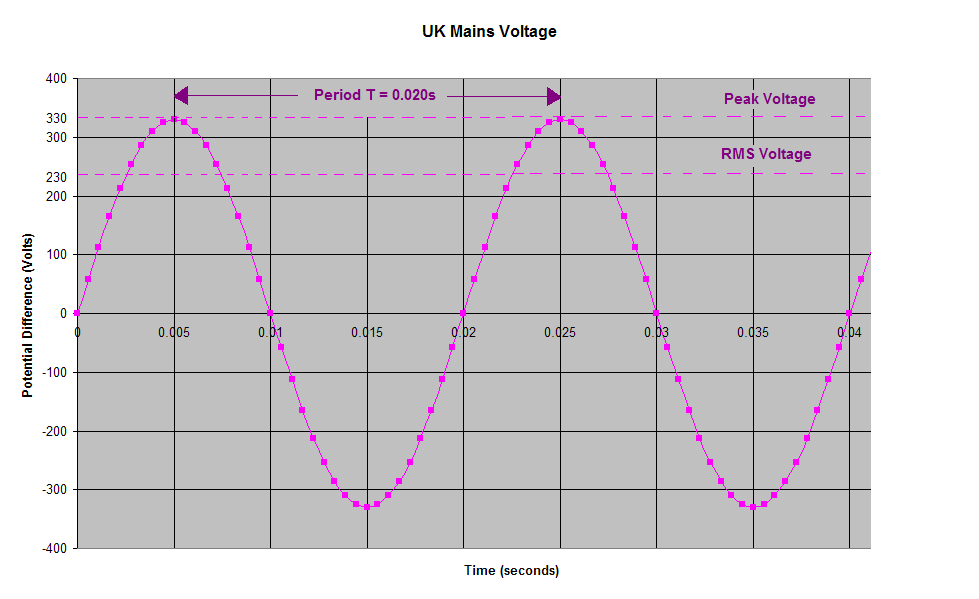What Is the Frequency of the Uk Mains Supply
Mains electricity supply is _____ hertz. The lamps are identical.

Accuracy And Stability Of The 50 Hz Mains Frequency
Is generated at a frequency.

. What is the frequency in hertz of the UK mains electricity supply. If the cable is accidentally cut the circuit breaker automatically switches the circuit off. This oscillation is known as electrical frequency.
Up to 24 cash back a The cable is connected to the mains electricity supply through a residual current circuit breaker. Electricity is supplied at a given voltage and frequency eg. In the UK the mains electricity supply is volts.
Up to 24 cash back Drayton Manor High School Page 2 Q2. The frequency of the UK mains electricity supply is. Ie a range of 2162 - 253V.
It means that the mains voltage that the gear is itself using includes harmonics of the mains fundamental frequency 50Hz in UK and the EU. Of 50 Hertz Hz and is delivered to houses at 230 Volts V. Is there a maximum limit to mains frequency range that appliances will accept eg.
For domestic supplies it is supplied at a voltage of 230V and a frequency of 50 cycles per second hertz Hz. The mains power supply in most countries is AC alternating current at 50 eg. The diagram shows two oscilloscope traces A and B.
Originally the UK mains supply voltage was specified at 240 Volts AC or more precisely 240 Volts RMS -6. In the UK the electricity supply is 50Hz this means that the direction of the current changes 50 times a second. The UK mains supply is 230-240V.
2 b The diagram shows a hairdryer designed to be used with the UK mains supply. Figure 2 i Calculate the potential difference across each lamp when the lamps are connected in series. It is the form of electrical power that is delivered to homes and businesses through the electric grid in many parts of the world.
In the UK the mains electrical supply. Several are due to the mechanical and electrical limitations of the early generators and include. Mains electricity curriculum-key-fact The mains supply in the UK is an alternating current ac voltage at a frequency of 50 hertz Hz and a voltage of 230 volts V.
Many electric and electronic clocks use this not just for power but also as the reference frequency for keeping track of the time. Just like the rest of Europe the voltage in the UK is 230 volts and the frequency is 50 Hz. The potential difference is 230V.
This 50 or 60 Hz is not perfectly stable due to the continuously changing load of the power grid and the generators reaction to load changes. There are many reasons why 50Hz or 60Hz in the US and some other countries is used as a popular supply frequency. A Describe how the potential of the live terminal varies with respect to the.
The Dynamic Demand web site indicates that there is a legal limit of about 495 Hz to 5075 Hz lines on the meter. 1 row From 1 January 2004 the mains supply should be 230V -6 10 50 Hz 1. Mains electricity Commonwealth English also known by the American English terms utility power power grid domestic power and wall power or in some parts of Canada as hydro is a general-purpose alternating-current AC electric power supply.
Alternating current that oscillates 50. If they conform to UK or EU standards eg. I What is the frequency of the mains electricity supply in the UK.
That means it is alternating between positive and negative voltage. 230 rows Mains electricity by country includes a list of countries and territories with the plugs. 50 Hz Give the name of the wire within an electrical cable that has green and yellow stripes.
1 c Figure 2 shows how two lamps may be connected in series or in parallel to the 230 volt mains electricity supply. What is the mains voltage in the United Kingdom. Alternating current means that the current continually changes direction.
Europe or 60 eg. This replaces the UKs former specification which was 240V 6 ie a range of 2256 - 2544V Variations should still be anticipated in some areas as the voltage will drop during periods of heavy demand and rise during periods of low demand. The mains electricity supply in the UK is AC- alternating current.
Trace A shows how the potential difference between the live and neutral terminals of an electricity supply changes with time. In the late 19th century when electrical power generation was in its infancy the design of generating plants was severely restricted by the mechanical and. In the UK the frequency of the ac.
The larger the current faster the electrons travel the greater the friction produced. Mains electricity is AC alternating current The electricity in the mains supply switches direction 50 times per second. Up to 24 cash back In the UK the mains electricity supply is.
The alternating current runs at a frequency of 50Hz. The added frequencies mainly odd-numbered harmonics at 150 250 and 350Hz are the primary causes of the richness and complexity of hums and buzzes. Voltage and frequency response.
The exact voltage and frequency of electricity on the network any one time varies as the demand and supply fluctuate. But this is too fast to see so lights dont appear to flicker although they are 50 times every second. The frequency of the UK mains electricity supply is.
UK Domestic Electricity Supply. This provides an alternating current ac.



No comments for "What Is the Frequency of the Uk Mains Supply"
Post a Comment